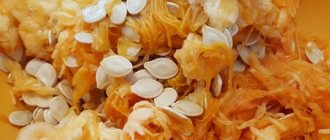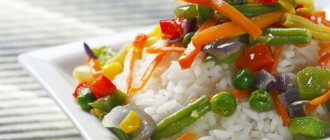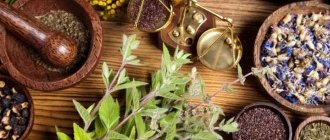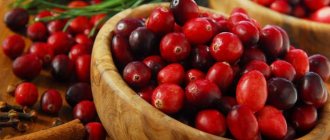Viruses cause flu
- infectious respiratory disease. There are different types of influenza, including A and B, which are the most common. There is no cure for the flu, and most people usually recover on their own. Traditional treatments can relieve symptoms and shorten recovery time at home. Antiviral medications can also reduce the severity of symptoms and speed up the healing process by one to two days.
Scientifically proven folk remedies against influenza
A few natural remedies that researchers have shown may be effective include:
Rest
Getting proper rest is one of the easiest ways to help your body recover. People with the flu should stay home and get as much rest as possible.
Stay hydrated
People with the flu may become dehydrated as their bodies fight the flu virus. People should eat certain foods and drink plenty of fluids, such as water or drinks with electrolytes.
Nasal rinsing
Rinsing your nose and sinuses can help reduce flu symptoms by removing viral particles from your nose and sinuses. Use only sterile, filtered or purified water to rinse your nose to avoid the risk of infection.
Humidifiers
A humid environment and inhaling steam can keep the airways moist and keep mucus flowing. In some cases, this may reduce flu symptoms. Take a warm bath or shower, or use a personal humidifier.
Food and nutritional supplements
Foods and supplements to help fight the flu:
Elderberry and other berries
Elderberry contains immunomodulatory and antioxidant compounds called polyphenols. Many other types of berries contain them too.
In the study, researchers gave elderberry extract to people with influenza B. Participants took the extract daily for 3 days. Symptoms resolved in 46.7% of participants taking the extract and 16.7% of participants taking placebo.
Echinacea
According to a 2021 article, antiviral compounds found in echinacea root help improve immune responses to influenza A. In the study, drinking hot echinacea drinks was as effective as the antiviral drug oseltamivir and reduced the risk of adverse side effects or complications.
Ginseng
Ginseng root helps relieve symptoms of upper respiratory tract infections, including influenza. Some studies show that taking ginseng extract may reduce the severity of flu symptoms and their duration.
Zinc
Oral zinc oxide supplements contain high levels of antioxidants that may reduce the duration and severity of influenza infections.
Zinc is naturally present in the following foods, such as:
- red meat, poultry and seafood
- beans
- nuts
- whole grains
- dairy
Vitamins C and D
The antioxidants found in vitamins C and D help reduce the severity and duration of viral respiratory infections. Vitamin C is found in many different foods, including citrus fruits, fruits, and foods and drinks fortified with vitamin C.
Vitamin D can be found in fatty fish, cheese, egg yolks and fortified dairy products. Ultraviolet rays also stimulate human skin to produce vitamin D.
Liquorice root
According to a 2015 article, licorice root extract contains antiviral and immune-modulating compounds, including nearly 300 flavonoids. Flavonoids give plants their color and provide many health benefits. These compounds interfere with the replication of influenza A viruses and some other types of viral respiratory infections. They can also improve the body's immune response. Pregnant women should avoid consuming licorice root.
Star anise
Star anise root contains several antiviral compounds. These include spirooligananone A and B. A 2021 paper states that spirooligananone has an effect on influenza A virus. Star anise also contains shikimic acid, which scientists use to create the antiviral drug Tamiflu (oseltamivir).
Dandelion
A 2021 study found that 0.625 to 5.0 milligrams per milliliter of aqueous dandelion extract reduced the risk of influenza A virus infection in human lung cells. The researchers suggested that the extract reduces the rate of virus replication. People can take dandelion as a supplement or consume it as a green salad, in wine, soups, or tea. Pregnant women should avoid dandelion.
Spurge
Euphorbia contains antiviral compounds called xanthones.
Xanthones from the milkweed species Polygala karensium help treat and prevent diseases caused by influenza viruses.
Cinnamon
Cinnamon bark is one of the ingredients in the traditional Japanese medicine called maoto, which may have antiviral effects. It is generally safe to use cinnamon in foods. Pregnant women should avoid consuming cinnamon.
Probiotics
Probiotics, especially strains of bifidobacteria, help improve immune responses to influenza by changing the levels or types of gut bacteria and reducing inflammation. Other strains of probiotics, such as Lactobacillus acidophilus and L. brevis, can also enhance the virus-killing effects of natural cells. Most probiotics can be found in fermented foods and supplements.
Treatment of influenza - traditional recipes
Milk with figs - Recipe No. 1
The goal is to reduce temperature, reduce inflammation in the body, and relieve pain.
- Mix milk (or water) with figs (dried berries).
- Proportions: 1 glass of liquid; 2 tbsp. spoons of berries.
Lukovo – milkshake
The goal is to strengthen the immune system with vitamins, saturate the body with a bactericidal, anti-inflammatory agent, eliminate dry cough, and relieve pain.
Let's prepare an onion milkshake.
Proportions: 0.5 liters of milk; 1 onion; 1 tbsp. spoon of honey.
- Place the finely grated onion in boiling milk.
- Let it boil again and turn it off. Let it sit for a little while, then strain it and add honey.
You can drink it, preferably hot, 2 times a day.
Onions with honey
The goal is to soothe the mucous membrane and relieve pain.
Proportions: 1 medium onion; 0.25 tbsp. sugar (with honey, keep the proportions 1:1).
- Cut the onion into thin slices and put it in a jar, covering it with sugar.
- Cover the vessel tightly with a lid and leave until the onion releases its juice.
Use a tablespoon of juice several times during the day. This recipe can also be used with honey.
Note!
This remedy should be used only if there are no acute diseases associated with the kidneys, liver, gastrointestinal tract or acute reaction to honey.
Lemons with garlic
The goal is to remove inflammatory processes and strengthen the immune system with vitamins.
Proportions: 4 lemons; 3 large, peeled heads of garlic; 2 l. water.
- Place lemons minced through a meat grinder into a jar, add garlic and fill with water.
- Leave in the refrigerator for 3 days, after covering the container with gauze.
- Don't forget to shake the jar from time to time. After 3 days, strain, pour into bottles and close tightly.
It is enough to take 50 ml three times a day.
Garlic paste with lard
The goal is to reduce inflammation in the body and strengthen the immune system.
Proportions: 200 g lard; 3-4 cloves of garlic; 1 teaspoon of ginger; spices to taste.
- Pass the lard through a meat grinder, add garlic juice, and ginger if desired.
- Then add salt and pepper and mix thoroughly.
It must be stored in a glass container, kept in a cool place. Use three times a day (the amount to spread on a sandwich with rye bread, but not less than 4 teaspoons).
When to see a doctor
You should consult a doctor if you have any symptoms that cannot be treated. Seek emergency help if the following symptoms occur:
- heat
- constant chest pain
- breathing problems
- dizziness and confusion
- severe headache or body pain
- bluish lips or face
- dehydration and lack of urination
- convulsions
- symptoms that improve and then worsen or return
People at high risk for complications should also talk to their doctor if they experience flu symptoms. This must be done within 2 days of the onset of symptoms.
People at high risk of complications:
- Small children
- pregnant women
- people with other diseases
- people aged 65 years and older
Talk to your doctor before using high doses of home remedies or taking them for more than a few days or weeks.
Rosehip infusion for children
Rose hips, rich in vitamins, will speed up recovery after the flu. Grind the rosehips in a blender or mortar. Pour a tablespoon of berries with boiled, cooled water. After standing for about eight hours, strain through two layers of gauze.
A child under three years old is given a tablespoon of infusion four times a day. Older children are offered a glass of the product to drink for three doses.
If you have a sore throat, gargle your baby’s throat with the product. The nasal passages are washed with rosehip infusion until recovery. Make sure that the solution is well filtered.
How do you feel about mandatory vaccination?
- Positively, it prevents many diseases. 61%, 2373 votes
2373 votes 61%2373 votes - 61% of all votes
- Negatively, these are all government schemes to make it easier to manage us. 26%, 1010 votes
1010 votes 26%
1010 votes - 26% of all votes
- Neutral, I don’t think it has any effect on my health. 13%, 518 votes
518 votes 13%
518 votes - 13% of all votes
Total votes: 3901
Votes: 3880
January 17, 2018
×
You or from your IP have already voted.
Incubation period of the disease. How dangerous
According to doctors, the most dangerous thing for a person is when he catches the influenza virus, the incubation period of which can be unpredictable. This is explained by the fact that the carrier spreads the virus, but at the same time he himself did not have primary symptoms.
Each type of respiratory disease has its own time period of infection by strain, as well as initial symptoms unique to it. Let's consider how long the incubation period can last, as well as precautions to avoid getting sick:
- A common respiratory disease has a short latent period, only 3-5 days. If a child does not have primary signs of symptoms, but is already infected at this moment, he may not know that he is a carrier of the strain. This is where the difficulty of correct diagnosis arises;
- The duration of the latent phase of the onset of the disease in an infected person will directly depend on the type of influenza virus. During incubation, it may not manifest itself;
- The state of the immune system and the number of the strain that is already in the body also play a big role in the duration of the period. When the body’s defense reaction weakens, the amount of virus will begin to actively multiply;
- If the flu in children has already taken over the body, the virus multiplies without stopping. After a couple of days of illness, the patient can infect someone around him;
- After the end of the incubation period, the first symptoms of the disease may appear: the body temperature goes beyond 39C, the body has a strong fever, a terrible cough and chills are tormented, the throat is red and hoarse, the body and joints ache. The patient feels completely overwhelmed.
Symptoms of the virus
The primary symptoms of the influenza virus are subjective, as they are similar to common respiratory diseases. As soon as a strong fever appears, aching bones and intoxication of the body - these are the primary symptoms of the influenza virus in children, as well as the end of the incubation period.
Popular Five reasons for infection with three types of mumps in adults
Let's consider the main complaints of an infected child or adult:
- Severe intoxication;
- Abdominal syndrome;
- When the upper respiratory tract is affected, severe coughing attacks are overcome.
General weakness, high fever, aches in muscles and joints, headache - all these are symptoms indicating intoxication of the body. If the immune system is weakened, the elevated temperature will last longer. In this condition, the child experiences increased hydrolysis and shudders. In rare cases, hallucinations and delusions.
After 3-4 days, the temperature will drop significantly, indicating an improvement in the condition. If it periodically subsides and rises again during this period, this indicates the presence of complications due to the active development of the virus. In this case, medical attention is necessary.
Due to extreme heat, children may develop brain swelling, seizures, sweat a lot and lose fluid. Dehydration of the body may begin, as other symptoms are observed: nausea, diarrhea, massive vomiting, colic and abdominal pain. In severe cases of infectious disease, infusion solutions are used.
In addition to high fever, other symptoms may be mildly manifested, except that the presence of a flu-like state in a child is emphasized by increased pallor, hyperemia of the mucous membrane, redness of the larynx, lethargy, and reluctance to play.
Every new year, in different regions, you can hear about epidemics of infectious diseases. What's scary is that strains are constantly undergoing mutation. It is now very common to hear that a new influenza virus is affecting a huge number of the population. The main peak of such news occurs in winter.
Let's consider the syndromes that require treatment of the influenza virus:
1. Intoxication syndrome. When the virus begins to actively multiply, progressive destruction of the body's cell membranes occurs, which causes intoxication. Depending on its severity, the influenza condition can be mild, severe or moderate. When intoxicated, the child experiences severe chills, an abundance of vomit, pain in the joints and muscles, photophobia, and general weakness;
2. Catarrhal syndrome. The flu strain in children enters when inhaled through the nasopharynx into the lungs, where it develops, affecting the tracheal mucosa. Its actions cause a severe non-productive cough with expectoration of small amounts of blood. This is a characteristic feature of the flu. A little later, pain and soreness appear in the throat. As soon as the flu in children subsides, mucopurulent discharge will begin to emerge from the nose;
3. Hemorrhagic syndrome is rare. If symptoms appear, this indicates the presence of a strain of influenza. For example, with ocular conjunctivitis there may be slight hemorrhages, and a hemorrhagic rash may appear throughout the body.
It is important to understand what the primary symptoms of the influenza virus are in order to get medical help on time. Children and elderly people especially need help. If diagnosis and treatment were carried out in time, this will help avoid complications.
Folk remedies for flu and colds: the best recipes
These best folk remedies for the flu can be used by both adults and children.
- An infusion prepared from the following mixture of plant materials will help your child normalize body temperature and quickly get rid of a sore throat, headache, runny nose and other manifestations of the flu: cordifolia linden flowers - 3 parts, Crimean rose flowers - 3 parts, black elderberry flowers - 2 parts, sage herb - 2 parts, rhizomes with roots of calamus - 2 parts. Preparation of the product: you need to grind the dried raw materials separately, combine in the specified ratio, mix well, pour 1 tablespoon of this mixture with 2 cups of boiling water and leave in a sealed container at room temperature for about half an hour, strain through 1-2 layers of gauze, squeeze out the raw materials, remaining at the bottom of the dish. Children under 5 years old take 1 tablespoon of infusion 4-5 times a day before meals; children 6-12 years old drink 1/4 cup of the product 2-4 times a day before meals; Adolescent children can take 1/2 cup of infusion 3-4 times a day before meals. The infusion exhibits antiseptic, anti-inflammatory, antipyretic, diaphoretic, sedative and diuretic effects. The product can be used as a gargle.
- Children from 8-9 years old (with the consent of the attending physician) are recommended to regularly take baths with an infusion of fragrant rue herb. Preparation of the infusion: the dried herb must be thoroughly crushed with a pestle in a mortar, 200-300 g of this raw material is poured into 1-2 liters of boiling water and infused in a sealed container at room temperature for 30-45 minutes, strained through 1-2 layers of gauze, the rest of the raw material is thoroughly squeezed out , pour the finished product into the bath water and stir. You should take a bath at a water temperature of 36-37.5ᵒC. The duration of the procedure should be approximately 10 minutes. The herb fragrant rue contains essential oil, alkaloids, furocoumarin bergapten, flavonol rutin, minerals and other biologically active substances (unfortunately, the chemical composition and medicinal properties of this plant have not yet been fully studied). This traditional medicine for colds and flu has an antiseptic, anti-inflammatory, restorative, mildly sedative and antispasmodic effect.
- It is also recommended that children aged 8-9 years (with the approval of the attending physician) take baths with an infusion of angelica officinalis herb added to the water. Preparation of the infusion: place 120-150 g of dried, carefully crushed herbs in a bowl pre-heated with warm water, pour 1-2 liters of boiling water and leave, tightly wrapped in a towel, for about 2 hours, strain the finished product through 1-2 layers of gauze, well squeeze out the raw materials that have absorbed water, pour into bath water and stir; the bath should be taken at a water temperature of 37-39ᵒ C. The duration of the procedure is 15-20 minutes; the full course of treatment consists of 6-8 procedures; If necessary, you can repeat the course of treatment. The plant contains various valuable substances in quite significant quantities: essential oil, tannins, sesquiterpene compounds, bergapten, felandrene, osthole, ostenol, pinene, phytosterols and ascorbic acid, minerals. Any preparations of the herb angelica officinalis have a pronounced antimicrobial, anti-inflammatory and antispasmodic effect.
Traditional medicine against flu and colds
The following remedies may be very useful in the traditional treatment of influenza.
- If a child just gets sick with the flu, he should eat fresh cinnamon rose hips and blood red hawthorn as often as possible. Young children are given fruit pulp, already separated from the seeds; Children 5-6 years old are given whole fruits, but the seeds must be spat out. Ascorbic acid contained in the fruits of these plants has well-defined antioxidant properties; it easily destroys the causative agent of the disease and also has an anti-inflammatory effect; Eating rosehip and hawthorn fruits at the right time and in sufficient quantities will significantly increase the child’s body’s resistance. If you use such a folk remedy to treat influenza, the disease will either be mild or not develop at all.
- A sick child needs to start taking a warm infusion (macerate) of cinnamon rose hips as early as possible. Preparation of infusion: dried fruits should be crushed as finely as possible with a pestle and mortar." Pour 1 tablespoon of this raw material into 1 glass of cooled boiled water and leave in a sealed container at room temperature for 6-8 hours, strain through 1-2 layers of gauze, squeeze out the remaining raw materials through the same gauze. For a child of the first 3 years of life, take 1 tablespoon of the product 3-4 times a day; An older child can drink the infusion in 3-4 doses throughout the day. If there is a sore throat, rawness, or inflammation on the tonsils and palatine arches, you can gargle with the same remedy; In cases of runny nose and swelling of the nasal mucosa, a warm infusion of rose hips is recommended to be used for rinsing the nasal cavities and nasopharynx. The duration of treatment is not limited. This folk remedy for influenza has a known disinfectant and anti-inflammatory effect.
- Take a hot infusion of common raspberries. Preparation of the infusion: place 6-7 g of dried fruits in a thermos, preheated with hot water, pour in 1 cup of boiling water and leave for about 45 minutes, strain through 1 layer of gauze or a fine strainer, squeeze out the remaining raw materials. A child under 5 years old should drink 1/2 cup of infusion 2-3 times a day; An older child can drink a full glass of the product 2-3 times a day. It is very useful to drink the infusion at night, then cover yourself with a warm blanket and sweat. The product has a known antipyretic and diaphoretic effect, and it also has an antiseptic and anti-inflammatory effect. This folk remedy against influenza is also indicated for headaches, which usually accompany the disease (salicylic acid, contained in raspberries, is a well-known analgesic).
- Regularly take a hot infusion of blackberry fruits. Preparation of the infusion: place 6-7 g of dried, slightly mashed blackberries in a thermos, preheated with hot water, pour 1 cup of boiling water and leave for about 45 minutes, shaking occasionally, strain through a fine strainer or 1 layer of gauze, squeeze out the raw materials that have absorbed the water well. . A child during the first 5 years of life should drink 1/2 cup of infusion 2-3 times a day; An older child can drink a full glass of the product 2-3 times a day; It is recommended to drink 1/2 glass of infusion before bed, and then cover yourself with a warm (preferably cotton) blanket. This folk remedy for flu and colds exhibits antipyretic, diaphoretic, disinfectant, anti-inflammatory and analgesic effects. Increased sweating after ingestion of this product helps normalize body temperature and cleanse the body;
Herbs for the flu in a child
◍ During illness, gargle with an infusion of sage and chamomile. Prepare it this way:
Dried herbs - pour boiling water over a teaspoon of each. Infuse for half an hour under the lid. Rinse with strained infusion up to five times a day. Alternate with other types of rinses.
◍ Raspberry infusion is indicated for headaches accompanying the flu. Salicylic acid in raspberries serves as an analgesic.
Seven grams of dry raspberries are brewed with boiling water in a thermos. After straining for two hours, give the child half a cup three times a day.
◍ A feverish reaction can be reduced by taking a decoction of willow bark or black elderberry flowers.
Take five grams of grass and chop it. Cook for twenty minutes, then keep in boiling water for forty minutes. After squeezing out the herbs, strain through layers of gauze.
Add a little honey for sweetness and benefit. We give two tablespoons to a child under seven years old, and a third of a cup to an older child up to three times a day.
◍ Using the above method, an infusion of string and burdock root is prepared. The solutions are consumed in small doses. Another treatment option is gargling with these infusions for the flu.
◍ Regularly give your child an infusion of wheatgrass and rowan fruit to drink when he has the flu.
Pour a tablespoon of the raw material, first crushed, into two cups of boiling water and cook for twenty minutes. Next we leave for a couple of hours. We give the strained mixture two tablespoons before eating to children under ten years of age. For older people, a quarter glass twice a day.
Infusion of a mixture of herbs for influenza
We prepare a multicomponent infusion from the following herbs:
◐ Walnut leaf
◑ St. John's wort flowers and leaves
An equal amount of each herb is crushed and combined.
A liter of boiling water is added to one hundred grams of raw materials, kept on low heat for thirty minutes. The cooled, squeezed raw material is brought to a liter of boiling water.
Children under five years old should take a tablespoon of decoction 4-5 times after meals. A child from six to twelve years old is given two large spoons, teenagers are given a quarter glass four times.
The course of taking the infusion for children is a week. Gargling with this decoction is also effective.











